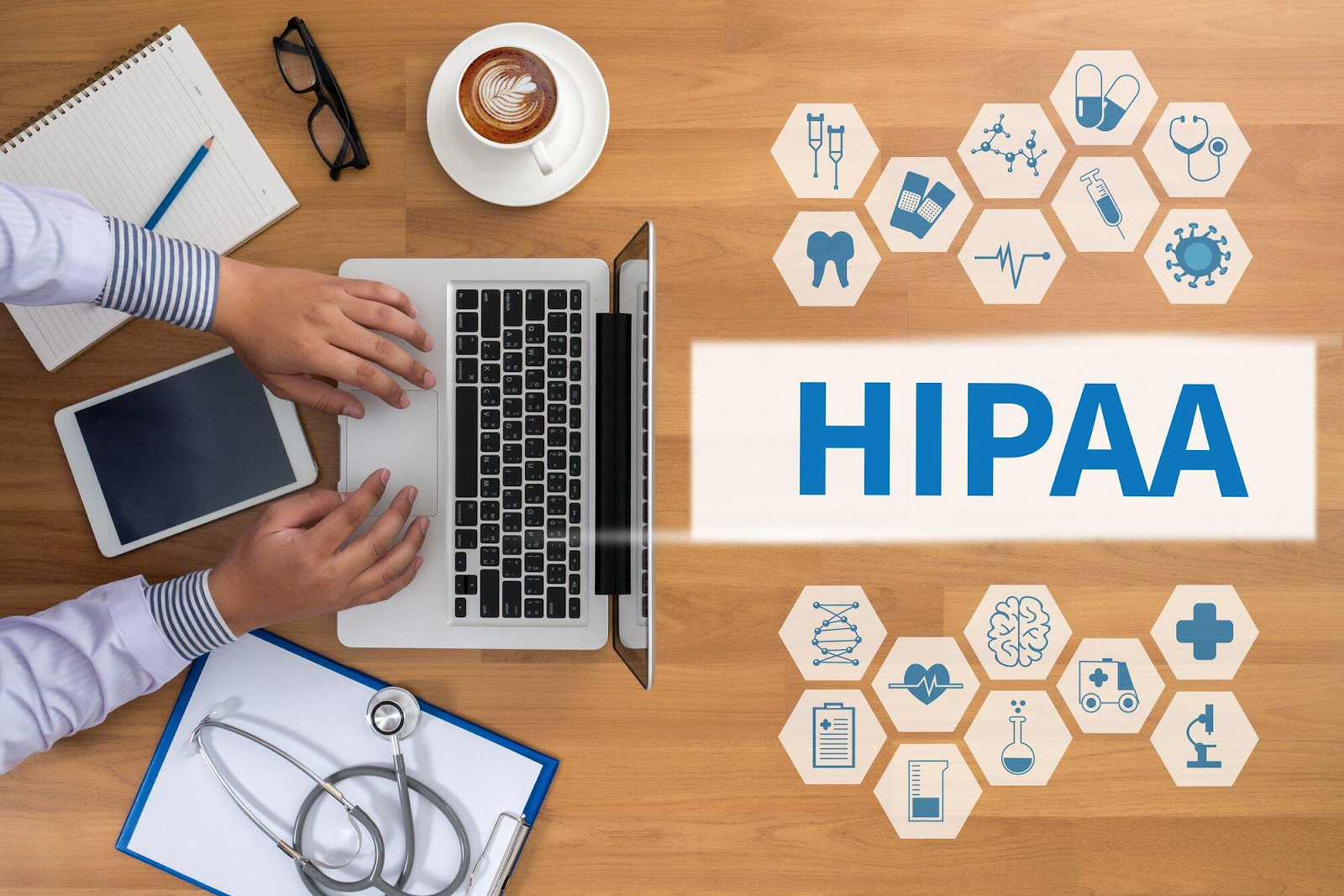Comments
- No comments found

Healthcare professionals and organizations have the critical responsibility of safeguarding patient information.
HIPAA is the cornerstone of this mission. It establishes stringent standards to ensure the security and privacy of sensitive patient data.
Navigating the intricacies of HIPAA compliance is a serious task. It is crucial in maintaining patient trust and avoiding costly breaches.
In this article, we'll answer questions like what is the key to HIPAA compliance and any related queries to its key points.
So, if you are wondering where to start, this article is for you!
Read on!

The HIPAA Privacy Rule is a federal regulation that sets national standards for the protection of patient health information. It applies to all:
healthcare providers
health plans
healthcare clearinghouses (known as covered entities)
All these engage in electronic transactions. Under this rule, patients have the right to control their personal health information. Covered entities must obtain written authorization from the patient. This should be done before disclosing any information, except for certain circumstances such as:
treatment
payment
healthcare operations
The Privacy Rule also requires covered entities to provide patients with notice of their privacy practices and how their information will be used. Patients have the right to their health information. They must be able to:
access their records
request amendments
receive an accounting of disclosures
The HIPAA Security Rule complements the Privacy Rule. This is done by establishing standards for the protection of electronic health information. It requires covered entities to implement:
physical safeguards
technical safeguards
administrative safeguards
All these help ensure the electronic health information:
confidentiality
integrity
availability
Covered entities must conduct risk assessments and implement measures. This can help protect against potential security threats. They must also have contingency plans in case of emergencies or disasters.
HIPAA requires each covered entity to designate a HIPAA Privacy Officer who is responsible for overseeing compliance with the Privacy Rule. This designated person must ensure that all employees are trained on HIPAA regulations. Then ensure that policies and procedures are in place to protect patient information.
Moreover, the Privacy Officer must investigate and:
report any data breaches
maintain records of disclosures
handle patient complaints regarding privacy
Moreover, a HIPAA compliance officer can also be responsible for implementing security measures to comply with the Security Rule.
Conducting a regular risk assessment is essential in maintaining HIPAA compliance. This process helps to identify potential security vulnerabilities and threats to patient information.
After identifying risks, covered entities must implement appropriate security measures. That way, they can mitigate those risks. Regular reviews of policies and procedures should be conducted to ensure ongoing compliance.
HIPAA requires covered entities to develop and implement policies and procedures. Both of which govern the use and disclosure of patient information. These policies should address how employees:
handle sensitive data
respond to security incidents
protect against unauthorized access
Regular training must be provided to ensure all employees are aware of these policies. They must understand their responsibilities in maintaining HIPAA compliance.
As mentioned earlier, regular employee training is essential to HIPAA compliance. Covered entities must ensure that all employees are aware of their responsibilities in safeguarding patient information. They must understand the consequences of non-compliance.
Training should cover topics such as:
data security
privacy practices
handling sensitive information
It's also crucial to provide training on new policies and procedures as they are implemented. In a dental facility, for example -- a dental training compliance program can be implemented. This can help ensure all dental staff are aware of HIPAA guidelines and their responsibilities in protecting patient information.
The same goes for other healthcare facilities. Regular training and education on HIPAA regulations can help prevent breaches and maintain compliance.
HIPAA requires covered entities to implement access controls to limit who has access to patient information. This includes physical controls such as secure facilities. It also includes electronic controls such as passwords and encryption.
Furthermore, access must be granted on a "need-to-know" basis. This means employees should only have access to the minimum amount of information necessary to perform their job duties.
Encryption is the process of converting data into a code to prevent unauthorized access. HIPAA requires covered entities to encrypt all electronic patient health information that is transmitted over an open network, such as the Internet.
Decryption is the process of converting encrypted data back into its original form. Only authorized individuals should have access to the decryption key or password. Along with encrypting data, covered entities must have policies in place for securely storing and managing decryption keys.
Covered entities must also ensure that electronic patient health information is transmitted securely. This means using secure methods such as encrypted email or secure file transfer protocols.
It's important to note that sending patient information through unsecured channels is a violation of HIPAA regulations. This can result in penalties. A good example of this is that of a regular email. This includes sending information to other healthcare providers for treatment purposes.
HIPAA requires covered entities to have Business Associate Agreements with any vendors or contractors. These are the ones who handle patient information on their behalf. These agreements outline the responsibilities of the vendor or contractor in protecting patient information and ensuring HIPAA compliance.
Associate entities are also subject to HIPAA regulations. So, any breaches or non-compliance can result in penalties for both parties.
In the event of a breach, HIPAA requires covered entities to notify:
affected individuals
Department of Health and Human Services
media outlets
Breach notification must occur within a specific timeframe. Covered entities must have policies and procedures in place. That way, they can respond to data breaches promptly. Failure to do so can result in severe consequences.
HIPAA compliance also requires covered entities to regularly audit and monitor their systems. This can help ensure that patient information is being protected. Audits should include:
reviewing access logs
monitoring network traffic
conducting vulnerability scans
Any potential issues must be addressed promptly. That way, the organization can maintain compliance and protect sensitive patient data. This also includes regularly reviewing and updating policies and procedures. Both of which should be based on audit findings.
Any HIPAA compliance audit should also include a review of employee training records. This can help ensure that all employees are up-to-date on their training requirements. Plus, any incidents of non-compliance should be addressed and remediated promptly.
In addition to electronic security measures, HIPAA also requires covered entities to implement physical safeguards. These include:
secure facility access
proper disposal of paper records
maintaining backups and disaster recovery plans
To understand these three, let' further discuss them.
Access to facilities or areas where patient information is stored must be restricted to authorized individuals only. This includes using:
key cards
biometric scanners
security guards to control access
These measures are in place to prevent unauthorized access and potential breaches. Without key cards, biometric scanners, or security guards access to sensitive areas is limited.
Proper disposal of paper records is crucial in maintaining HIPAA compliance. All paper records containing sensitive patient information must be shredded or disposed of securely. This also includes any electronic devices or media that contain sensitive data.
Having backups and disaster recovery plans in place is essential in case of emergencies or disasters. These plans must include procedures for recovering or restoring patient information. It must ensure its confidentiality during the recovery process.
Physical security is just as crucial as electronic security. It is useful in protecting patient information from breaches and maintaining HIPAA compliance. This includes securing physical devices such as:
laptops
tablets
smartphones
All of the devices contain patient information. So, it's essential to secure them properly.
Despite best efforts to prevent data breaches, they can still occur. Therefore, HIPAA requires covered entities to have an incident response plan in place.
This plan should outline steps to be taken in the event of a data breach, including:
who to contact
how to mitigate damage
how to notify affected individuals and authorities
Having an incident response plan can help minimize the impact of a breach and demonstrate compliance with HIPAA regulations. This is essential in avoiding penalties.
HIPAA compliance requires covered entities to maintain thorough and up-to-date documentation. This includes:
policies and procedures
risk assessments
employee training records
business associate agreements
incident response plans
Having this documentation readily available is crucial during audits or investigations to demonstrate compliance with HIPAA regulations. It's also essential for identifying potential areas of improvement in maintaining data security and privacy.
HIPAA compliance is an ongoing process. Covered entities must regularly conduct audits and reviews. This helps ensure that policies and procedures are being followed. It means that all security measures are up-to-date.
Regular audits can also help identify any potential risks or vulnerabilities in the system. This allows covered entities to address them promptly. It's essential to keep documentation of these audits as well.
Maintaining HIPAA compliance is an ongoing effort. Covered entities must continuously improve and adapt their policies and procedures to keep up with changing technology and regulations.
This can include conducting regular training sessions for employees. It also means implementing new security measures. And, they must work on staying informed on any updates or changes to HIPAA regulations.
Continuous improvement is not just about keeping updated. By continuously improving and adapting, covered entities can maintain HIPAA compliance. They can protect their organization and everyone involved.
And in turn, it will enhance trust with patients. It will ensure the confidentiality of their health information is always maintained.
To ensure that all aspects of HIPAA compliance are being addressed, covered entities can follow a HIPAA compliance checklist. Following a checklist regularly can help maintain HIPAA compliance as well. This also demonstrates a commitment to maintaining patient trust and avoiding costly breaches.
Moreover, a HIPAA compliance checklist can also be used as a guide for new employees. It allows them to understand their responsibilities in maintaining HIPAA compliance.
Regular training and updates should also be included on the checklist. This will ensure all employees are aware of any changes or updates to policies and procedures.
In addition to HIPAA compliance, healthcare entities must also comply with regulations set forth by the Occupational Safety and Health Administration. OSHA is responsible for ensuring safe and healthy working conditions for employees.
Integrating OSHA compliance into HIPAA practices can help protect employees' health and safety. This can be achieved while also maintaining HIPAA's privacy and security standards.
It's essential to have policies and procedures in place to address potential hazards in the workplace. It goes the same with providing necessary training and equipment. It means also maintaining documentation of OSHA compliance efforts.
Healthcare entities can ensure the well-being of both their patients and employees. This can be achieved by integrating OSHA compliance into HIPAA practices.
Overall, healthcare organizations must prioritize compliance with both HIPAA and OSHA regulations. That way, they can protect patient information and maintain a safe working environment for employees.
So, constant evaluation and integration of these regulations is necessary. This helps ensure the best care for patients and the safety of healthcare professionals.
So, what is the key to HIPAA compliance? It can be summed up in three words: awareness, diligence, and adaptation.
Awareness means staying informed about HIPAA regulations. It means understanding the importance of protecting patient information.
Adaptation is essential to keep up with changing technology and regulations. By prioritizing these key components of HIPAA compliance, healthcare organizations can ensure the security and privacy of patient information.
So, if you work in the healthcare industry, it's crucial to familiarize yourself with HIPAA regulations. Know your responsibilities in maintaining compliance.
If you want to read more, visit our blog. We have more!
Leave your comments
Post comment as a guest